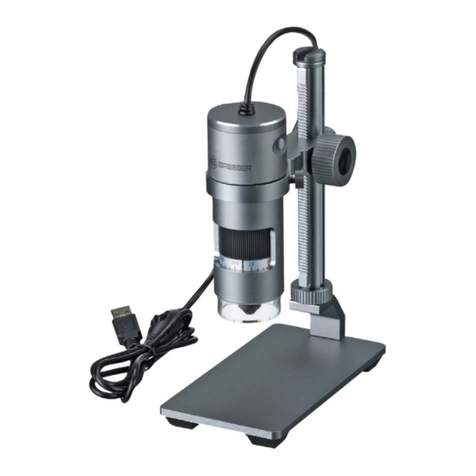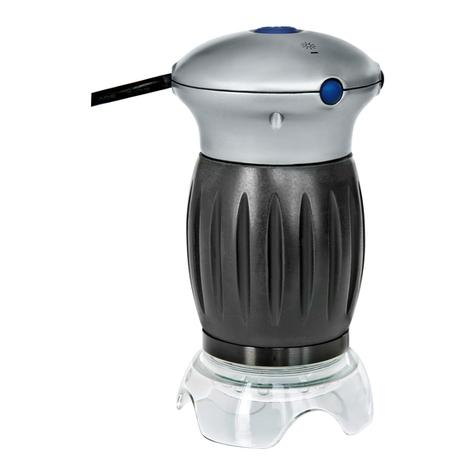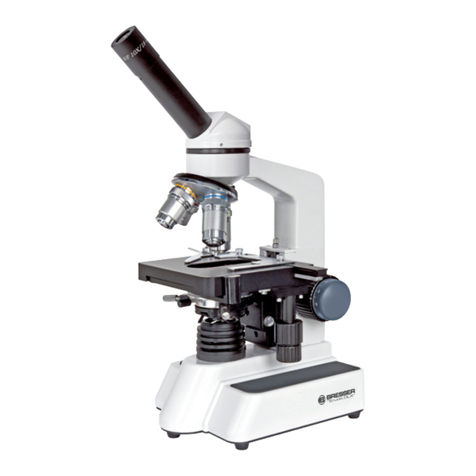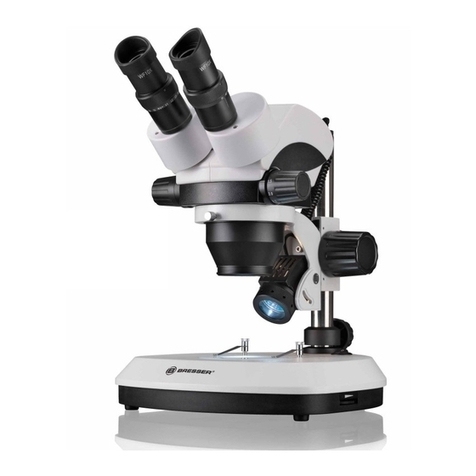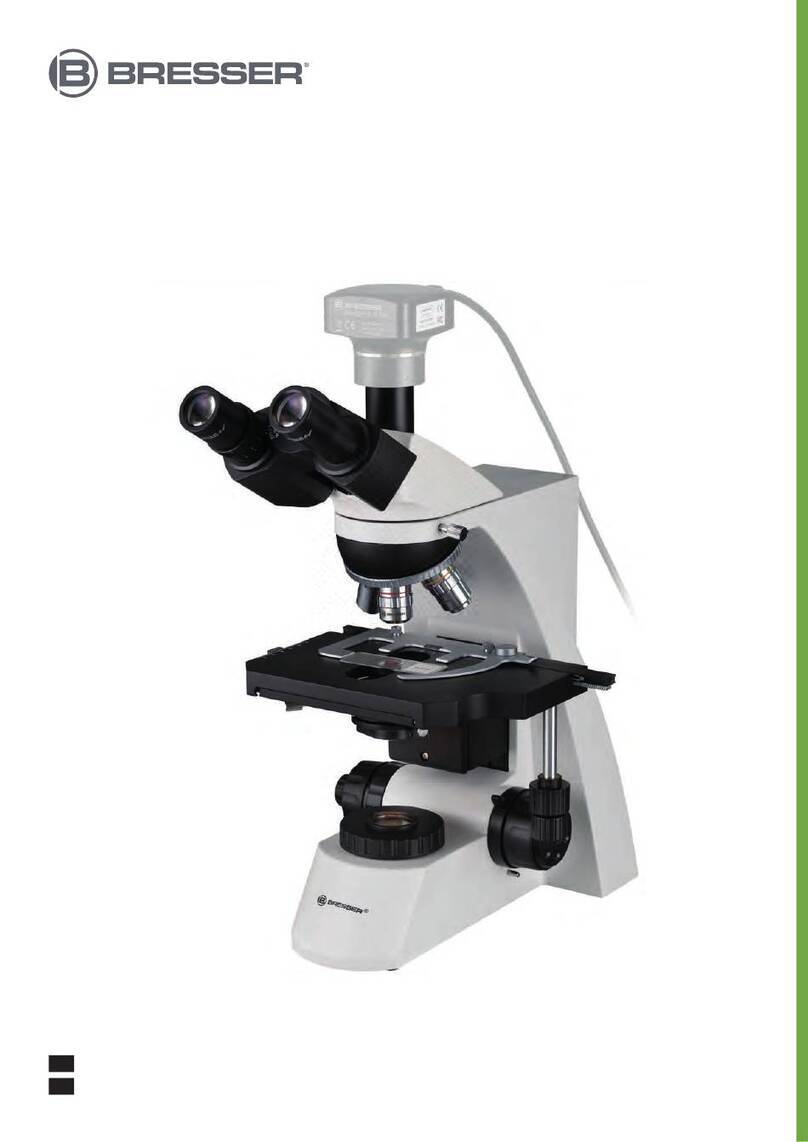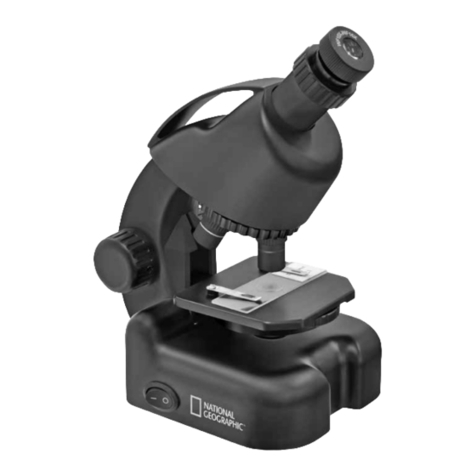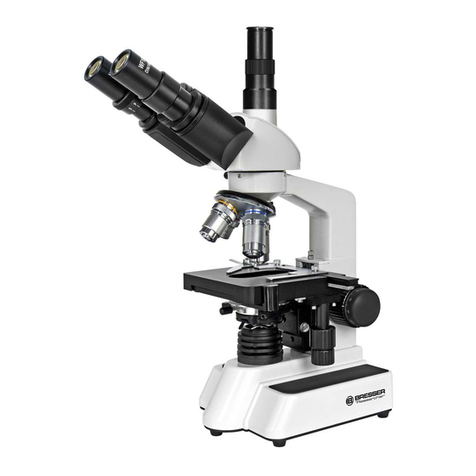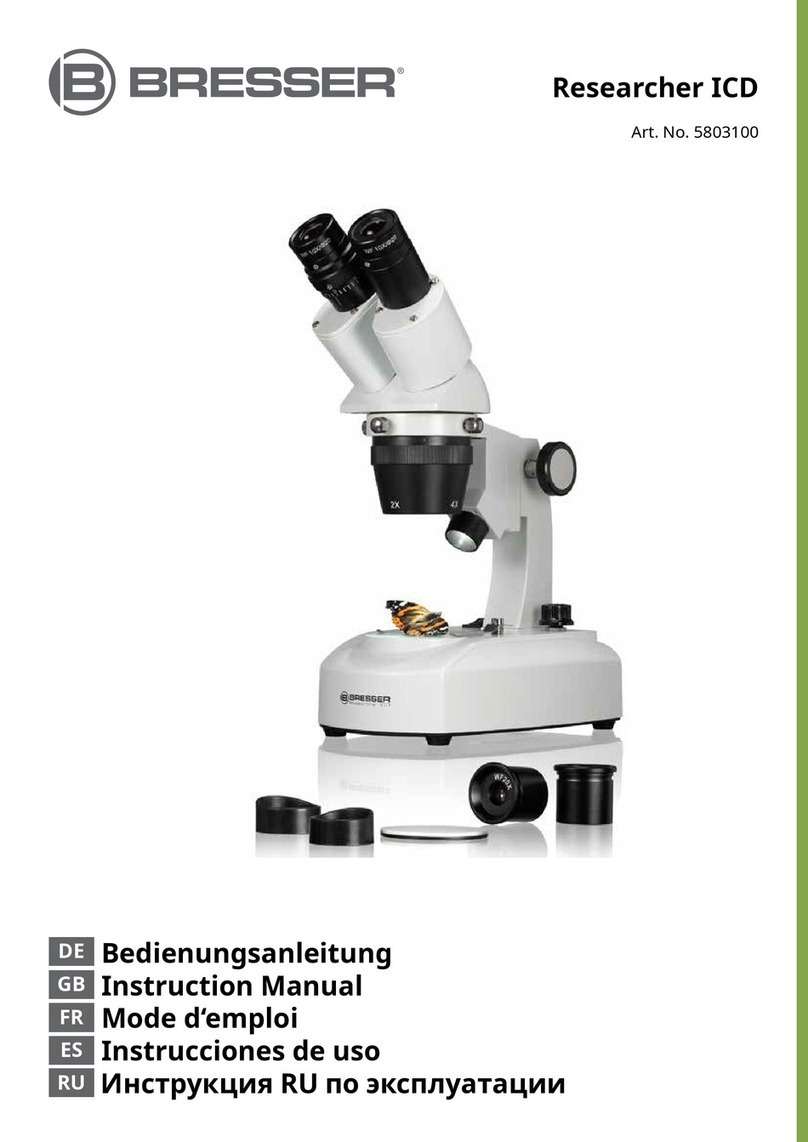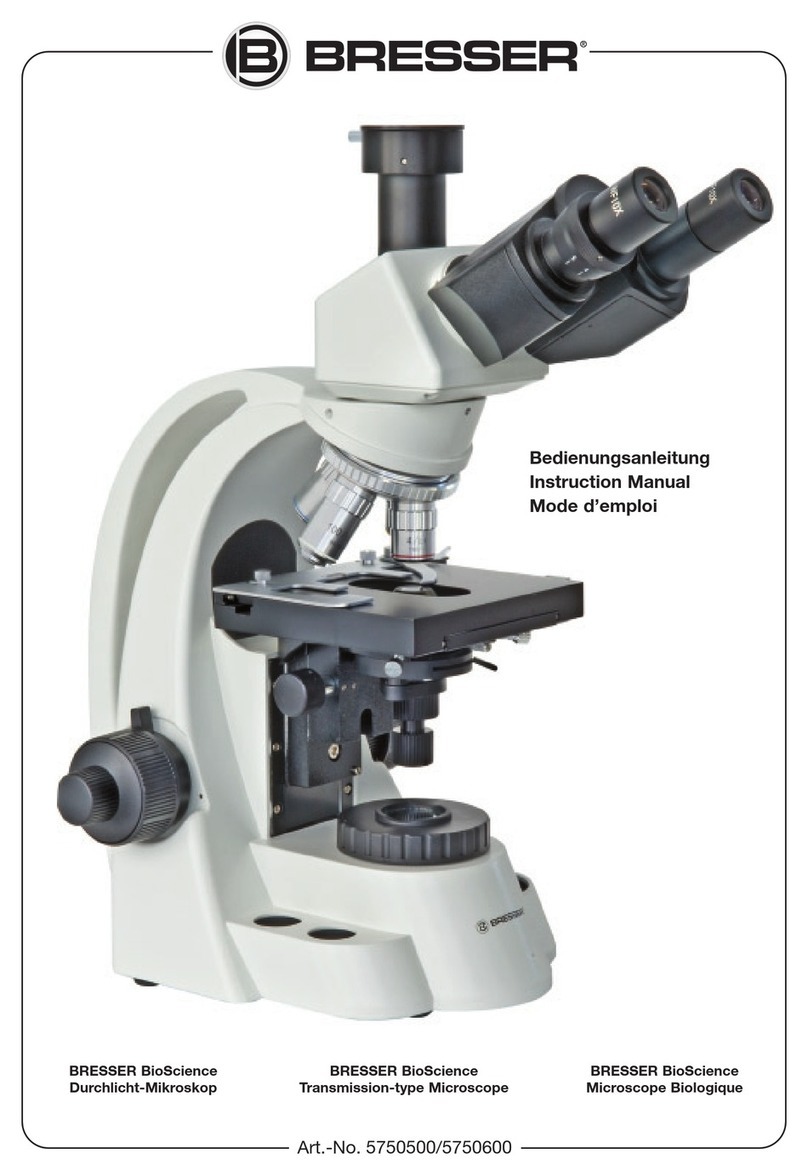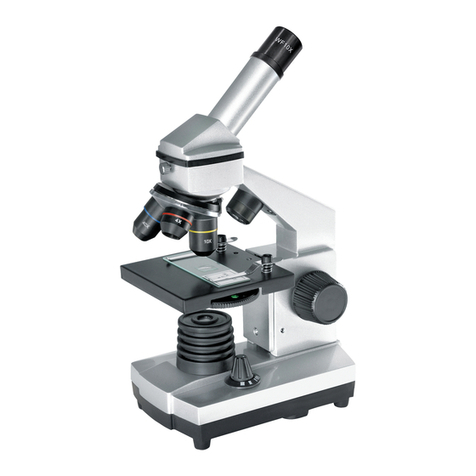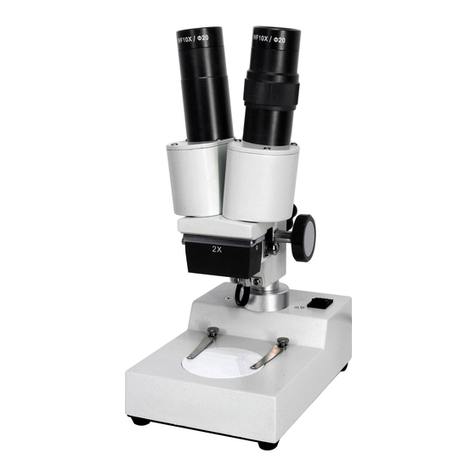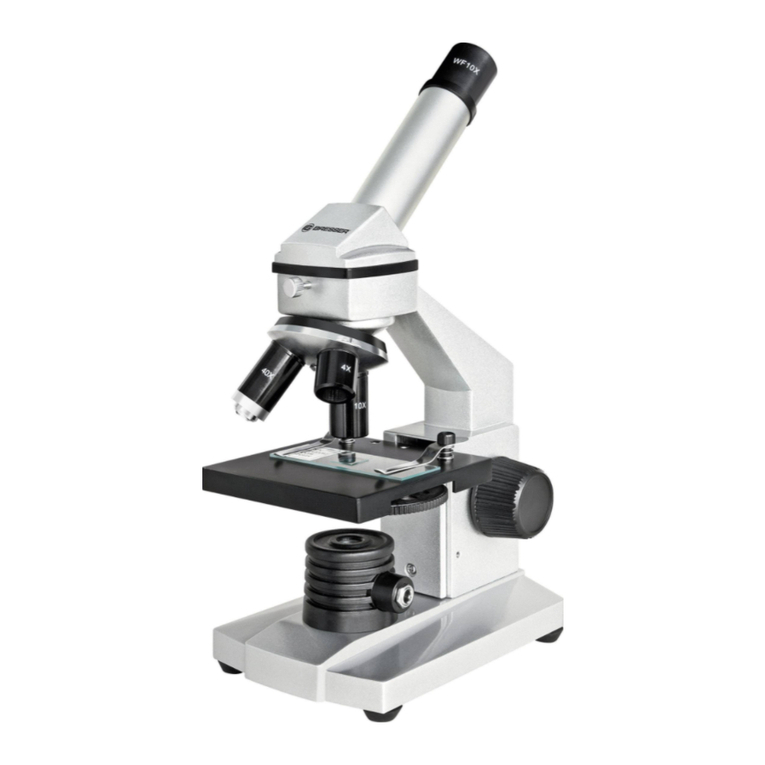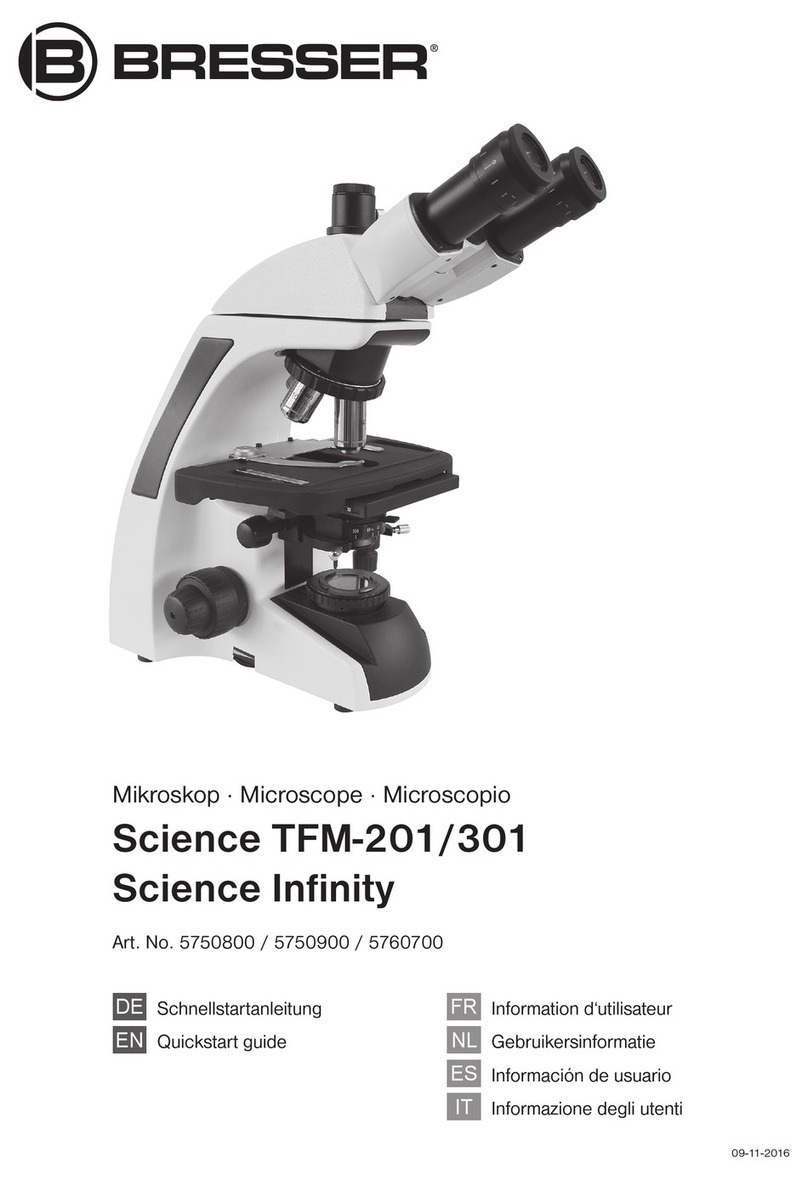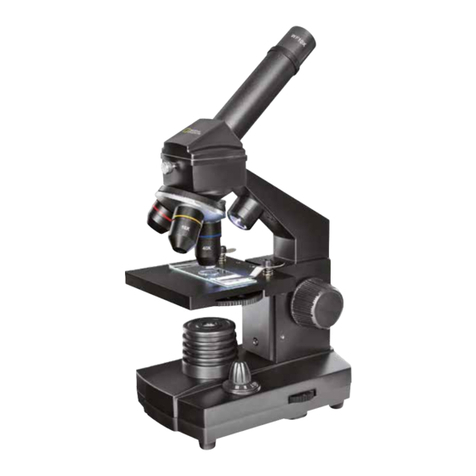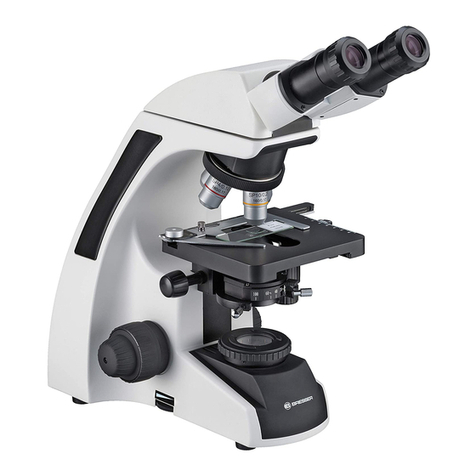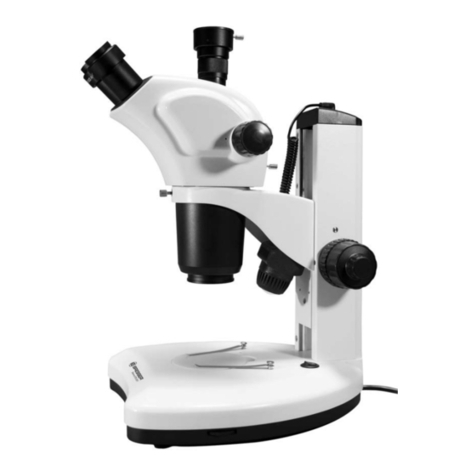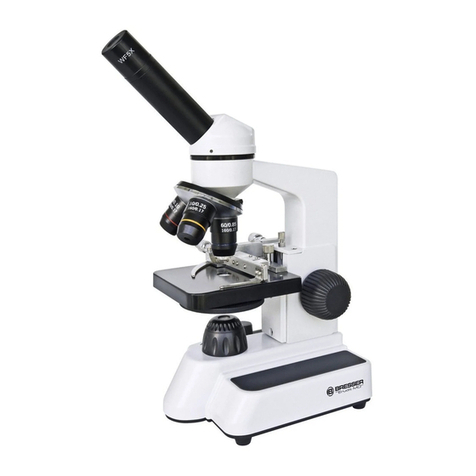
9
EN
1. What is a microscope?
A microscope contains two lens systems: the eyepiece and the objective. We’re presenting these
systems as one lens each so that the concept is easier to understand. In reality, however, the eyepiece (1)
and the objective in the turret (3) are made up of multiple lenses.
The lower lens (objective) produces a magnified image of the prepared specimen placed on the stage (4).
The picture, which you can’t see, is magnified once more by the second lens (eyepiece, 1), which you can
see as the ‘microscope picture’.
2. Assembly and location
Before you start, choose an ideal location for using your microscope. It’s important that you choose a
spot with enough light for normal observation. Furthermore, it is recommended that you place the micro-
scope on a stable surface, because a shaky surface will not lead to satisfactory results.
3. Normal observation
For normal observation, place the microscope in a bright location (near a window or desk lamp, for exam-
ple). Remove the microscope from the package and tilt the microscope arm (9) so that it’s in a comfort-
able viewing position for you.
Turn the focus knob (2) to the upper stop, and set the objective turret (3) to the lowest magnification.
Now, take a look through the eyepiece and adjust the mirror (5) so that you see a uniform, bright circle of
light. Or, you can use the electronic light source (6). You’ll find further tips about the light source in the
next section. Now, place a prepared slide (11) under the clips on the stage (4), directly under the objec-
tive. When you take a look through the eyepiece, you can see the magnified specimen. At this point, you
still might see a slightly fuzzy picture. Adjust the image sharpness by slowly turning the focus knob (2)
until the picture appears sharp and clear. You can now select a higher magnification by turning the objec-
tive turret and selecting a different objective.
When you do so, note that the sharpness of the picture must be adjusted again for the higher magnifica-
tion. Also, the higher the magnification, the more light you will need for good illumination of the picture.
TIP: Avoid positioning the mirror so that it is exposed to direct sunlight, since it can cause a glare, which
won’t allow you to get a clear picture.
4. Observation (electronic light source)
NOTE! Before initial operation, the foil used for protecting the battery from discharging must be pulled
out of the battery compartment.
Locate the mirror/light on the base of the microscope. Flip the mirror/light with the light facing up and
press the button to power on the light. This microscope is equipped with an incandescent light that
illuminates the specimen from below.
TIP: The higher the magnification used, the more light is required for a good
illumination of the picture. Therefore, always start your experiments with one of the lower magnifica-
tions.

